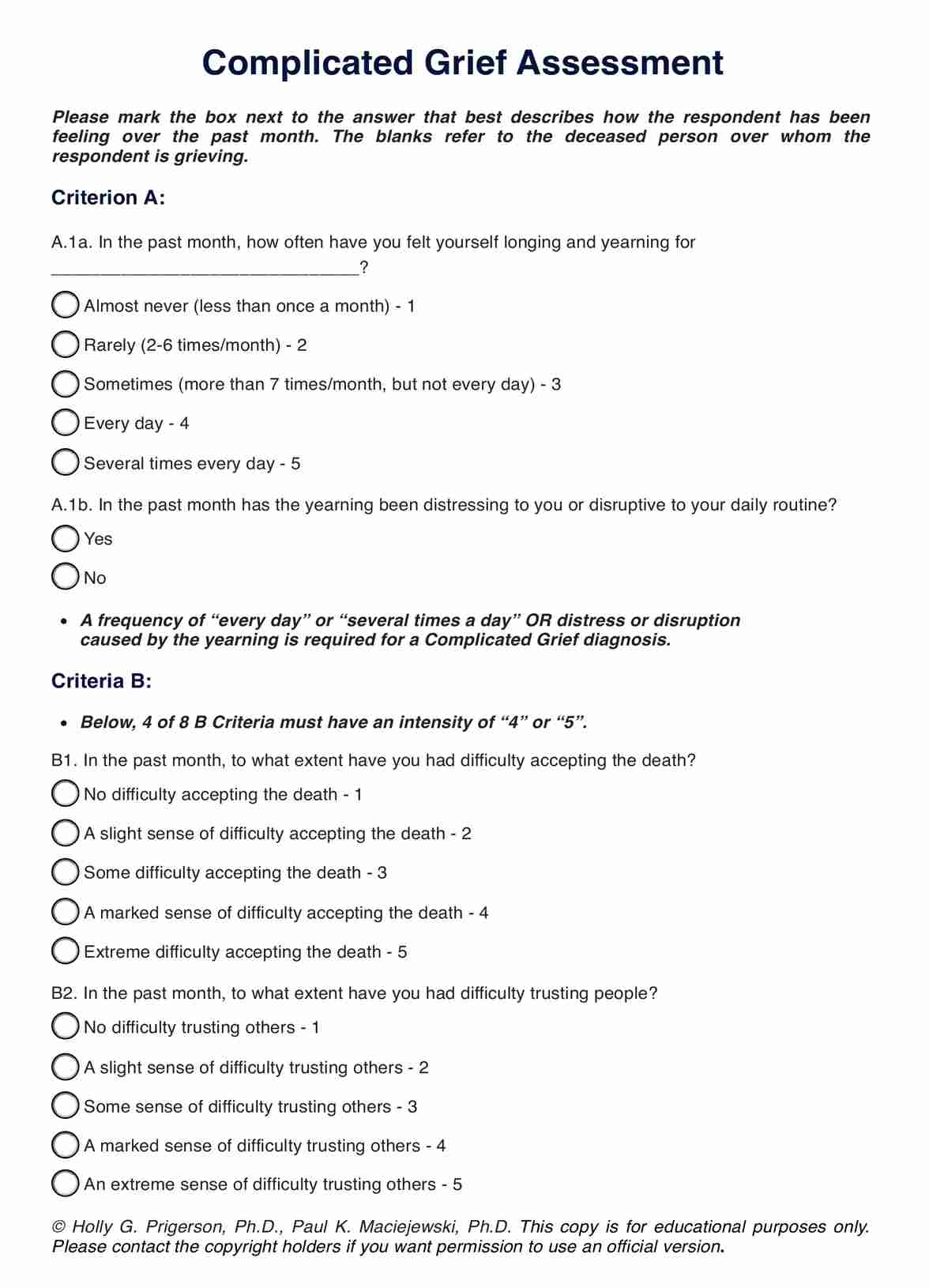It can be accomplished within 10 to 20 minutes.

Complicated Grief Disorder Test
Learn how the Complicated Grief Disorder Test can help diagnose complicated grief through this guide.
Use Template
Complicated Grief Disorder Test Template
Commonly asked questions
Trained mental health professionals such as psychologists, psychiatrists, and clinical social workers can administer this test.
Yes. We do not recommend using this as the sole assessment, though. It would be best to use other assessments like the Inventory of Complicated Grief and the Prolonged Grief Disorder - PG 13, the latter of which was also created by the authors of the Complicated Grief Test.
EHR and practice management software
Get started for free
*No credit card required
Free
$0/usd
Unlimited clients
Telehealth
1GB of storage
Client portal text
Automated billing and online payments











